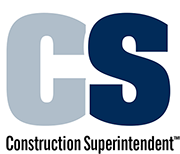
By Doug Seyler
A jobsite is a bustling operation, and a well-orchestrated approach to managing it is crucial for success. With numerous activities taking place simultaneously and sequentially, everyone from the superintendents and project managers, to the laborers and equipment operators, must understand their role and execute it in the most coordinated manner possible. Data sharing is key, so all groups have the right data – accurate and updated – at the right time.
Connected site technology, such as collaborative software applications and tools that connect the digital and physical components of a project, deliver the communication needed for safe, productive and efficient jobsites.
Specialty construction software offers significant opportunities for construction teams. Specialized applications undoubtedly boost efficiency and productivity, delivering results that paper-based and spreadsheet processes cannot match. Today’s technology can connect the field, office and equipment. It can also link various stakeholders throughout the construction process, including the general contractor, project owners, subcontractors and more.
The following are four practical examples of what can be achieved through a unified approach that eliminates manual data transfer steps.
1. Request resources directly from the field
Field tracking software is designed primarily to help contractors record production, labor, equipment utilization and other information in the field. Specialized software allows them to capture more and higher-quality data with less effort than with paper or spreadsheets – and then quickly analyze that data.
Construction teams achieve even greater efficiency and streamline workflows when they link field tracking apps with systems used to manage scheduling and dispatching of people, equipment and materials. When tracking progress versus plan over the course of a job, field leaders typically need to request additional or different project resources. With a live connection, they can use the tracking application to communicate those resource needs directly to the scheduling and dispatching application and achieve a speedy response with a documented “paper trail” of what was requested and when.
2. Send and receive alerts and notifications
Software for scheduling and dispatching also provides company-wide visibility into the schedule, allowing for simple push notifications about assignment changes, by email or text message immediately. For instance, suppose a site supervisor/foreman reviews the following week’s schedule and decides to re-assign a team member, crew or piece of equipment to a new jobsite. With the scheduling app, a notification could be received and confirmed by the scheduler, and then sent by the system to employees, a transport crew or even a third-party trucking organization. This is another big advantage that online construction dispatch software provides over manual processes with spreadsheets, whiteboards and the chaotic, offline messages. The workflow also creates an electronic record of the communication, so anyone with proper credentials can see and follow in real time.
3. Mitigate equipment maintenance logistical challenges
Field teams can utilize construction field tracking software apps to request equipment repairs directly from the field – where and when defects are usually detected. Superintendents or foremen can document the problem and send a notification to the maintenance application. That information will be used to create repair requests in the maintenance app, bypassing phone calls, texts and other offline communications.
Maintenance managers don’t always have flexibility when scheduling preventive or repair work. However, real-time visibility into the scheduling software allows them to see when equipment is being used or moved. That information gives them a chance to plan work, whenever possible, at times that will maximize the efficiency of mechanics and minimize jobsite disruptions related to equipment downtime.
Schedulers and dispatchers gain similar efficiency and uptime benefits when their software is linked to the maintenance software. They can see when repair work is scheduled and work around those times as they assign the equipment.
4. Efficiently transfer data from field-to-office-to-field
Contractors are leveraging construction technology to seamlessly connect the field to the office to manage data, react to and resolve jobsite issues. Thanks to advanced jobsite monitoring technology for example, contractors can view progressive volumes of material moved over time to understand real work progress and proactively make adjustments needed to stay on budget and on schedule. Construction technology solutions can gather data from machine control systems automatically, bringing field data into the office without the cumbersome and error-prone process of manual data transfer.
Construction technology also connects the office to the field. Consider these benefits of a connected system:
- Remotely send construction-ready models to machines and survey crews in the field and manage technology assets across jobsites
- Collaborate with superintendents to quickly troubleshoot issues and efficiently support the jobsite team
- Pinpoint where machines and survey crews are and what designs they are working on, without leaving the office
By eliminating data gaps that often lead to errors, project team frustration and communication inefficiencies that can plague jobsites, connected site technology not only leads to better field data, but drive smarter decisions that foster safer, well-organized and more productive jobsites.
Doug Seyler is vice president of customer success at Trimble.
Image courtesy of Trimble


 Join our thriving community of 70,000+ superintendents and trade professionals on LinkedIn!
Join our thriving community of 70,000+ superintendents and trade professionals on LinkedIn! Search our job board for your next opportunity, or post an opening within your company.
Search our job board for your next opportunity, or post an opening within your company. Subscribe to our monthly
Construction Superintendent eNewsletter and stay current.
Subscribe to our monthly
Construction Superintendent eNewsletter and stay current.